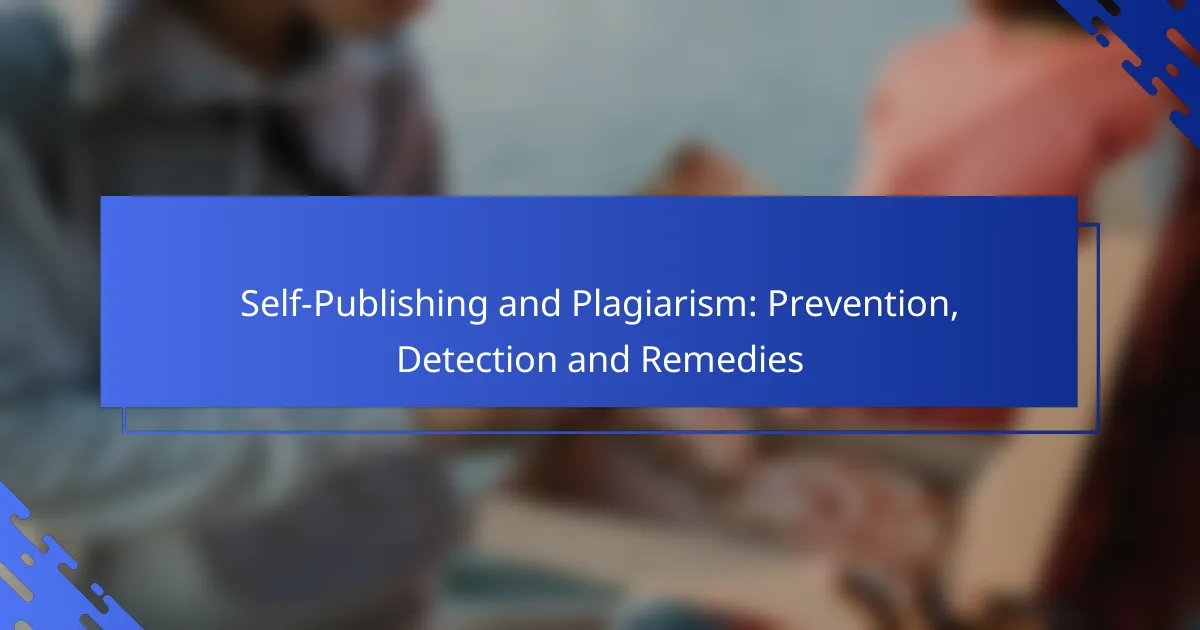In the realm of self-publishing, safeguarding your work against plagiarism is crucial for maintaining originality and protecting your intellectual property. By employing proactive prevention strategies and utilizing effective detection methods, authors can significantly reduce the risk of their content being copied or misattributed. Additionally, understanding the available remedies for addressing plagiarism can empower writers to defend their rights and seek appropriate recourse when necessary.
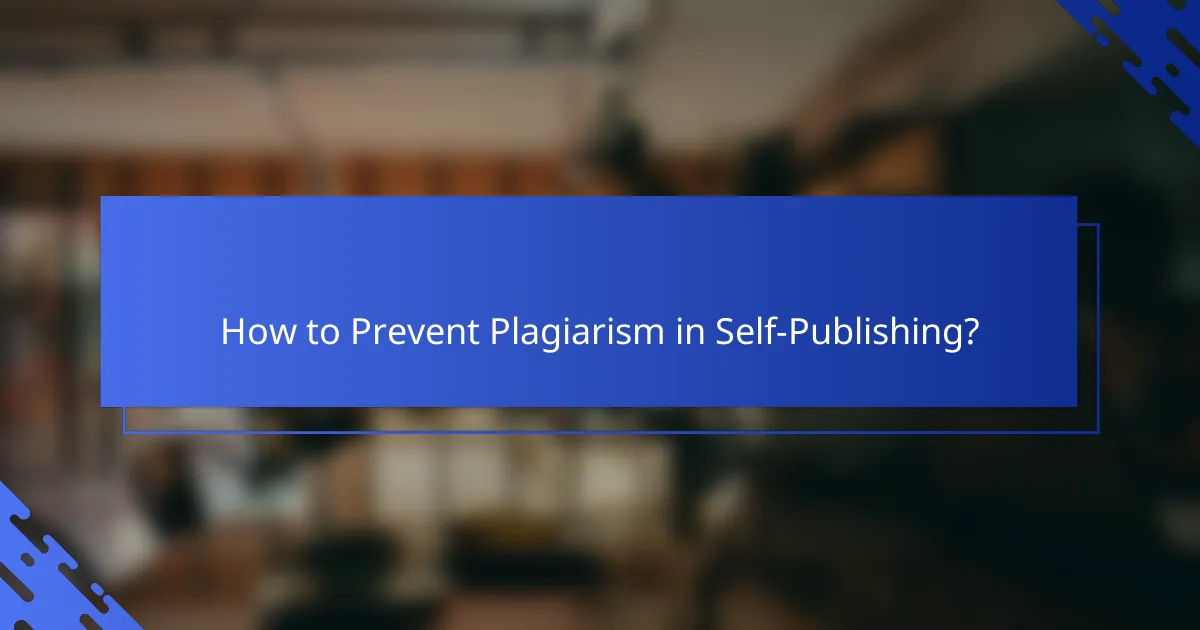
How to Prevent Plagiarism in Self-Publishing?
Preventing plagiarism in self-publishing involves proactive measures to protect your work and ensure originality. By implementing effective strategies, you can safeguard your content from being copied or misattributed.
Use plagiarism detection tools
Plagiarism detection tools are essential for identifying copied content before publication. Services like Grammarly, Turnitin, and Copyscape can scan your work against a vast database of existing texts to highlight any potential overlaps.
Regularly using these tools can help you catch unintentional plagiarism, allowing you to revise your work accordingly. Aim to check your manuscript multiple times during the writing process for the best results.
Implement copyright notices
Including copyright notices on your work is a straightforward way to assert your ownership. A simple statement like “© [Year] [Your Name]” at the beginning or end of your publication can deter potential infringers.
While copyright protection is automatic upon creation, a visible notice reinforces your rights and can be useful in legal disputes. Consider registering your work with the copyright office for additional legal backing.
Educate on proper citation
Teaching yourself and your collaborators about proper citation practices is crucial in preventing plagiarism. Familiarize yourself with different citation styles such as APA, MLA, or Chicago to accurately credit sources.
Providing guidelines or resources on citation can help ensure that everyone involved in the project understands how to properly attribute ideas and content, reducing the risk of accidental plagiarism.
Establish original content guidelines
Setting clear guidelines for original content creation is vital in a self-publishing environment. Define what constitutes original work and provide examples to clarify expectations for all contributors.
Encourage creativity while emphasizing the importance of originality. Regularly review these guidelines to adapt to new trends and standards in publishing.
Utilize content licensing agreements
Content licensing agreements can protect your work by specifying how others may use it. These agreements outline the terms under which your content can be shared, modified, or distributed, providing legal clarity.
Consider using Creative Commons licenses to allow for certain uses while retaining your rights. This approach can foster collaboration while ensuring your original work remains protected from unauthorized use.
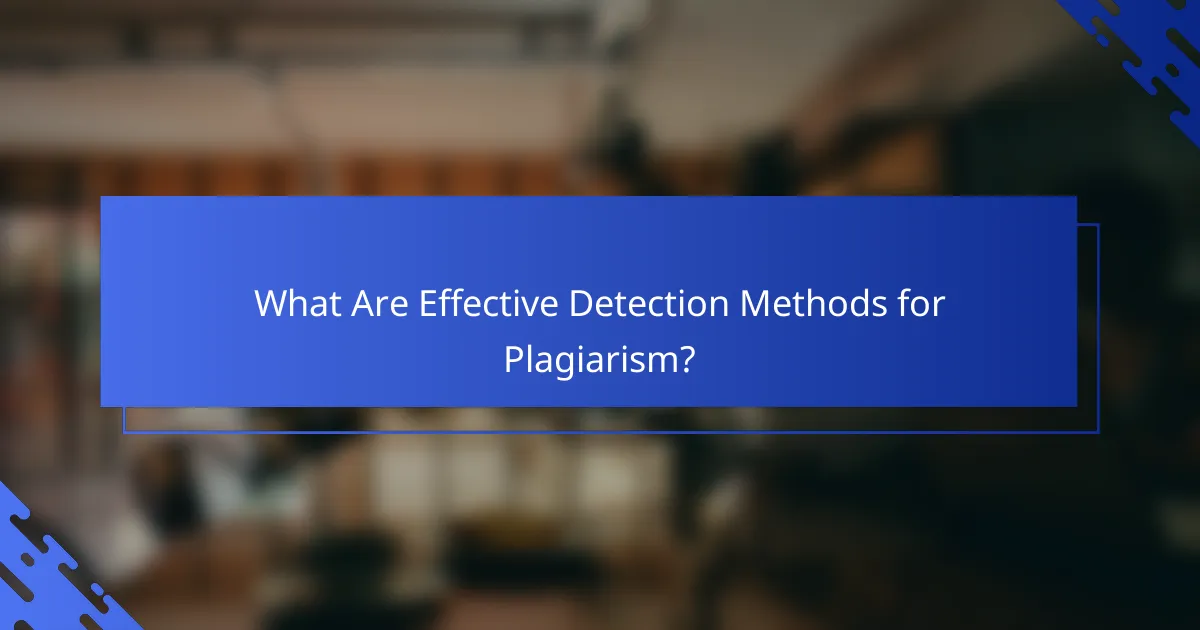
What Are Effective Detection Methods for Plagiarism?
Effective detection methods for plagiarism include using specialized software, conducting manual checks, and regularly monitoring online content. These strategies help ensure originality and protect intellectual property in self-publishing.
Employ software like Turnitin
Using software such as Turnitin is a reliable way to detect plagiarism. These tools compare submitted texts against vast databases of academic papers, articles, and internet content to identify similarities.
When selecting plagiarism detection software, consider factors like accuracy, user interface, and cost. Many services offer subscription models, which can range from monthly fees to annual licenses, depending on your needs.
Conduct manual checks
Manual checks involve reviewing your work against potential sources to ensure originality. This can be done by searching for specific phrases or sentences online to see if they appear in existing publications.
While manual checks can be time-consuming, they allow for a deeper understanding of your content’s uniqueness. It’s beneficial to keep a list of sources you reference to cross-check effectively.
Monitor online content regularly
Regularly monitoring online content helps you stay aware of how your work is being used. Tools like Google Alerts can notify you when your text appears elsewhere on the internet, allowing for timely action if plagiarism is detected.
Establish a routine for checking your content, perhaps monthly or quarterly, to ensure ongoing protection. This proactive approach can help you address unauthorized use before it escalates into a more significant issue.
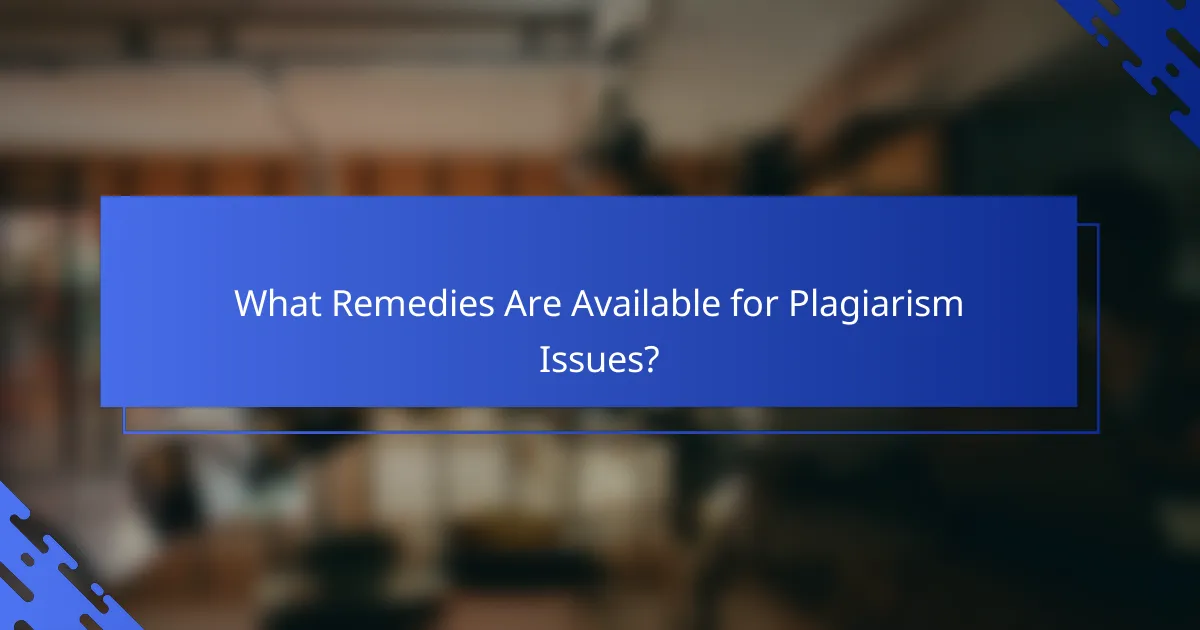
What Remedies Are Available for Plagiarism Issues?
Several remedies exist for addressing plagiarism issues, including legal actions and alternative dispute resolution methods. Understanding these options can help authors effectively protect their rights and seek redress.
File a DMCA takedown notice
Filing a DMCA (Digital Millennium Copyright Act) takedown notice is a common first step for addressing online plagiarism. This notice requests the removal of infringing content from websites or platforms that host it without permission.
To file a DMCA notice, you need to identify the infringing material, provide your contact information, and submit the notice to the service provider hosting the content. Be aware that false claims can lead to legal consequences, so ensure your claim is valid.
Seek legal counsel
Consulting with a lawyer who specializes in intellectual property can provide valuable insights into your situation. Legal counsel can help you understand your rights and the potential for pursuing a lawsuit against the infringer.
Consider the costs involved, as legal fees can vary widely. Many attorneys offer initial consultations at no charge, allowing you to gauge your options without immediate financial commitment.
Engage in mediation
Mediation is a less confrontational approach to resolving plagiarism disputes. This process involves a neutral third party who facilitates discussions between you and the alleged infringer to reach a mutually acceptable resolution.
Mediation can be quicker and less expensive than litigation, often resulting in solutions that preserve relationships. However, it requires both parties to be willing to negotiate and compromise.
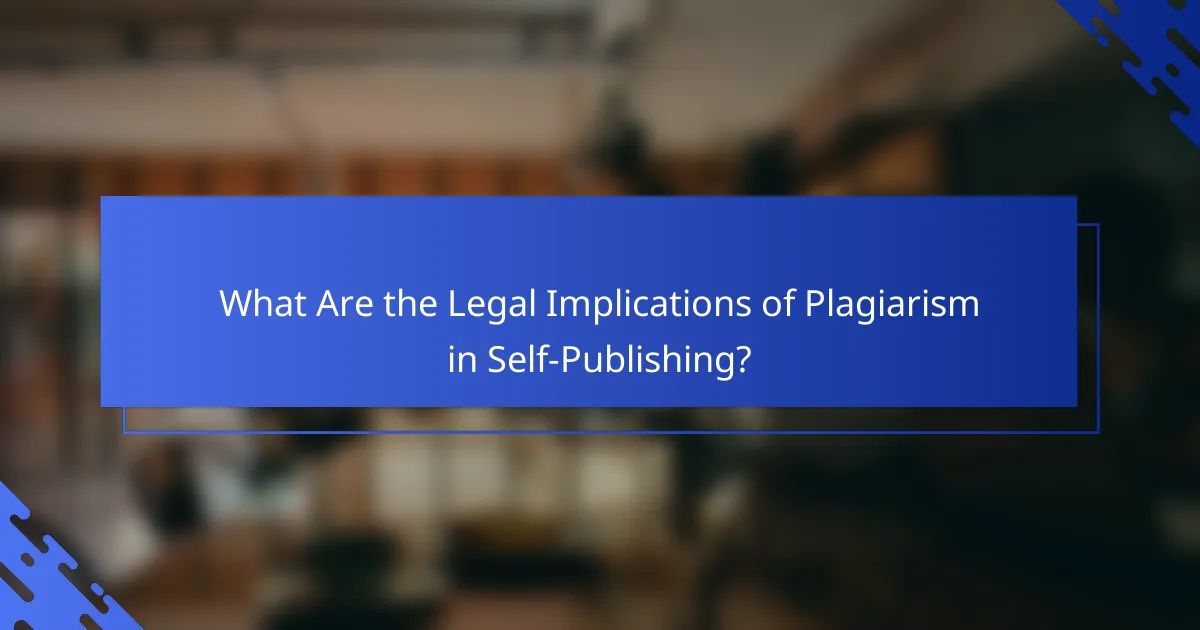
What Are the Legal Implications of Plagiarism in Self-Publishing?
Plagiarism in self-publishing can lead to serious legal consequences, including lawsuits and financial penalties. Understanding the legal framework surrounding copyright is essential for authors to protect their work and avoid infringing on others’ rights.
Understanding copyright law
Copyright law grants authors exclusive rights to their original works, including the right to reproduce, distribute, and display their creations. In many countries, copyright protection is automatic upon the creation of a work, meaning authors do not need to register their work to be protected. However, registration can provide additional legal advantages, such as the ability to sue for statutory damages.
Self-publishers should be aware that copyright laws can vary by country, affecting how they protect their work. For instance, in the United States, the Copyright Act of 1976 outlines the rights of authors, while in the European Union, the Directive on Copyright in the Digital Single Market provides specific protections for digital content.
Consequences of copyright infringement
Copyright infringement can result in a range of consequences, from financial penalties to legal action. Authors found guilty of plagiarism may face lawsuits, which can lead to costly settlements or damages that could reach thousands of dollars. Additionally, they may be required to cease distribution of their work, resulting in lost revenue.
Beyond financial repercussions, infringement can damage an author’s reputation and credibility in the literary community. To avoid these consequences, self-publishers should conduct thorough research to ensure their work is original and properly attribute any sources used. Utilizing plagiarism detection tools can also help identify potential issues before publication.
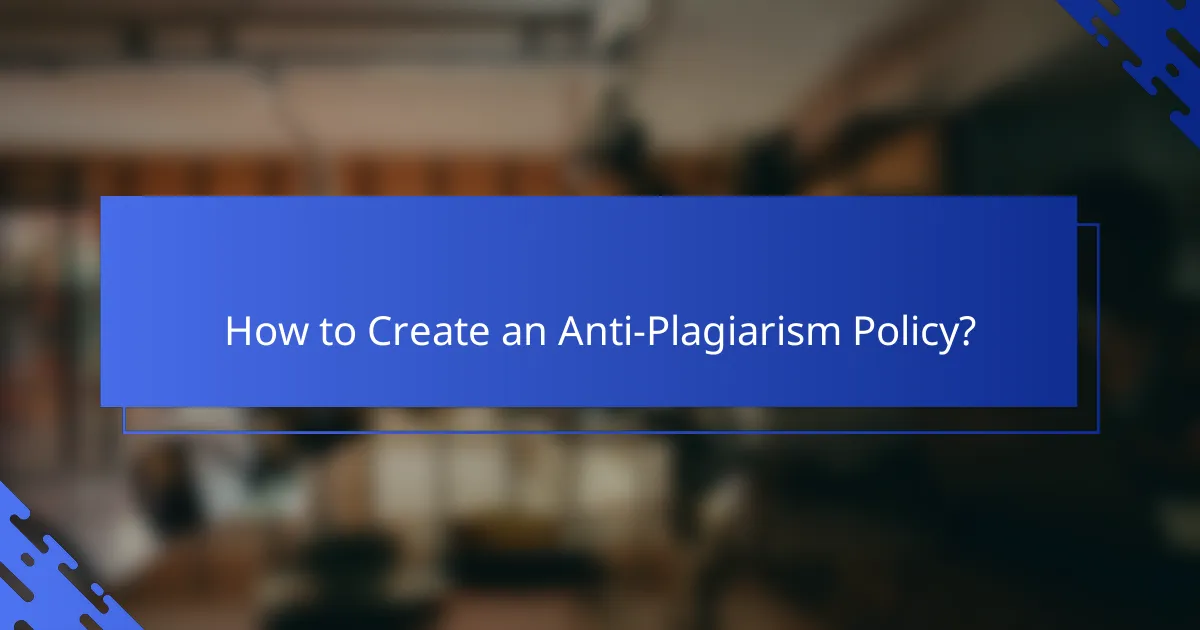
How to Create an Anti-Plagiarism Policy?
Creating an anti-plagiarism policy involves defining what constitutes plagiarism, outlining the consequences for violations, and providing resources for authors to understand and prevent it. A well-structured policy can help maintain integrity and originality in self-publishing.
Define plagiarism clearly
Plagiarism is the act of using someone else’s work, ideas, or expressions without proper acknowledgment, presenting them as one’s own. This can include copying text, images, or even ideas from published works without citation. Clearly defining plagiarism in your policy helps authors understand the boundaries of acceptable use.
Examples of plagiarism include direct copying of text, paraphrasing without credit, and using images without permission. It’s essential to specify these examples in your policy to avoid ambiguity.
Outline consequences for violations
Consequences for plagiarism should be clearly stated in your policy to deter violations. Common repercussions can include retraction of published works, bans from future publishing, or legal action in severe cases. Establishing a tiered system of consequences can help manage different levels of infractions.
For instance, first-time offenders might receive a warning, while repeated violations could lead to more severe penalties. This structured approach encourages authors to adhere to ethical standards.
Provide resources for authors
Offering resources for authors is crucial in fostering a culture of originality. Include links to plagiarism detection tools, citation guides, and educational materials on copyright laws. These resources empower authors to create original content and understand the importance of proper attribution.
Consider hosting workshops or webinars to educate authors about plagiarism and its implications. Providing access to these tools and knowledge can significantly reduce the likelihood of unintentional plagiarism.
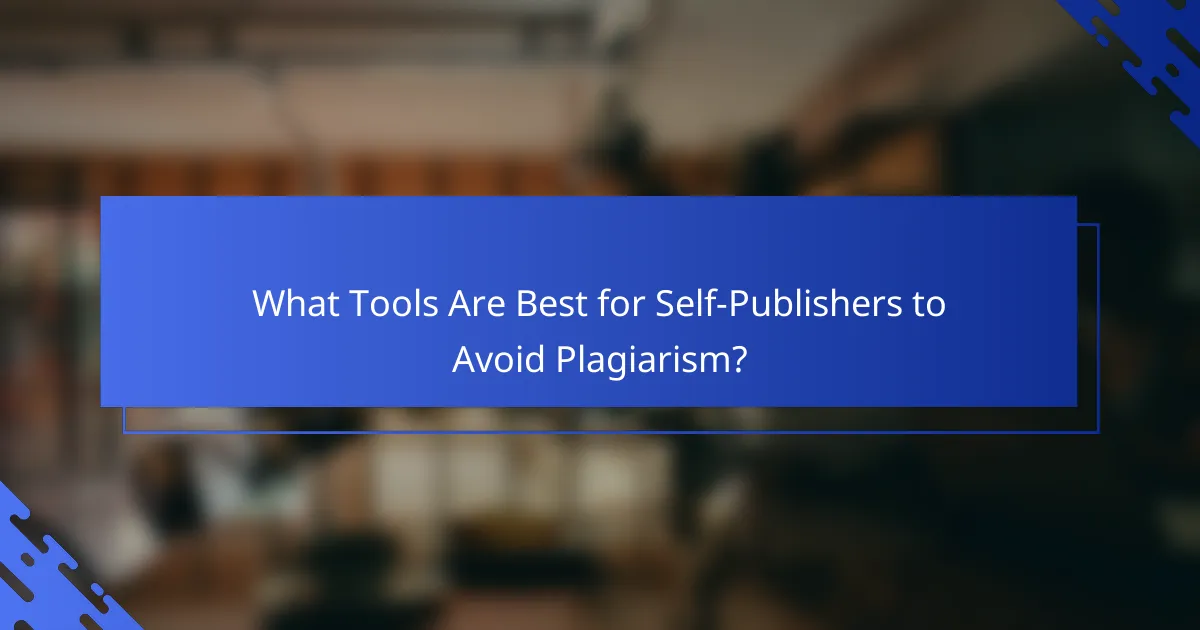
What Tools Are Best for Self-Publishers to Avoid Plagiarism?
Self-publishers can utilize various tools to effectively prevent plagiarism, ensuring their work remains original and credible. Key tools include writing assistants and plagiarism checkers that help identify potential issues before publication.
Grammarly for writing assistance
Grammarly is a popular writing assistant that not only checks for grammar and spelling errors but also helps in maintaining originality. Its plagiarism detection feature scans your text against billions of web pages to highlight any similarities with existing content.
When using Grammarly, self-publishers should focus on its suggestions for rephrasing and improving sentence structure. This can enhance the uniqueness of your writing while ensuring clarity and coherence.
To maximize Grammarly’s effectiveness, consider using its premium version, which offers advanced features like tone detection and genre-specific writing style checks. Regularly reviewing your work with Grammarly can help you develop a more original writing style over time.
